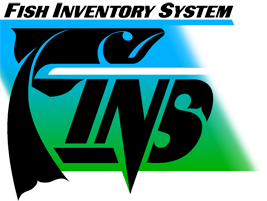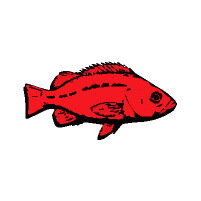Nez Perce Tribe (NPT) submits data to FINS from hatcheries that support LSRCP and Idaho Power mitigation. NPT also submits data from some of their other hatchery and research programs to FINS and these are described below.
Facilities
The following are NPT hatchery programs that also submit data to FINS.
With your mouse you can click and move the map, zoom in/out, and click on the icons to view the full name of the hatchery and satellite facility.
JCAPE focuses on enhancing the number of natural-origin Snake River spring-summer Chinook spawning in Johnson Creek. The supplementation program is located on Johnson Creek, a tributary of the South Fork Salmon River, and uses only natural-origin Chinook for broodstock and allows the other returning adults to spawn naturally above the weir.
![]() Shown on the map is the Johnson Creek picket style weir, that is used for the collection of adult broodstock which are trucked to the USFWS South Fork Salmon River adult facility for spawning.
Shown on the map is the Johnson Creek picket style weir, that is used for the collection of adult broodstock which are trucked to the USFWS South Fork Salmon River adult facility for spawning.
Eggs are then transferred to the USFWS McCall Fish Hatchery for rearing to smolt size and eventual release back into Johnson Creek. The release target is for 150,000 smolts annually.
Go to the USFWS LSRCP page to learn more information about the McCall Fish Hatchery and view its location.
The Nez Perce Tribal Hatchery, located on the mainstem of the Clearwater River, focuses on enhancing natural spring Chinook in the Clearwater Basin. The facility is used to incubate and rear fall and spring Chinook, after which the fish are transferred to acclimation sites before being released.
Funding: Bonneville Power Administration.
Show on the map:
![]() Nez Perce Tribal Fish Hatchery
Nez Perce Tribal Fish Hatchery
![]() Acclimation sites:
Acclimation sites:
Cedar Flats Acclimation, Facility Lukes Gulch Acclimation Facility, Newsom Creek Acclimation Facility, North Lapwai Valley Acclimation Facility, Site 1705, Sweetwater Springs Rearing Facility, and Yoosa/Camp Creek Acclimation Facility.
The Grande Ronde Supplementation-Lostine River Spring Chinook program is a cooperative project between the NPT, ODFW, CTUIR, and USFWS. This program was initiated in 1994 as a conservation measure in response to severely declining runs of Chinook salmon in the Grande Ronde Basin.
The program utilizes supplementation with conventional and captive brood production to prevent extirpation and begin rebuilding of ESA listed spring Chinook. The production goal for the Lostine River O&M program is 250,000 acclimated smolts that are acclimated and released back into the Lostine River.
![]() Shown on the map is the Lostine River weir where fish are collected and then they are trucked to the USFWS Lookingglass Hatchery Facility where they are spawned and reared.
Shown on the map is the Lostine River weir where fish are collected and then they are trucked to the USFWS Lookingglass Hatchery Facility where they are spawned and reared.
Go to USFWS LSRCP page to learn more about the Lookingglass Hatchery and view its location on the map.

